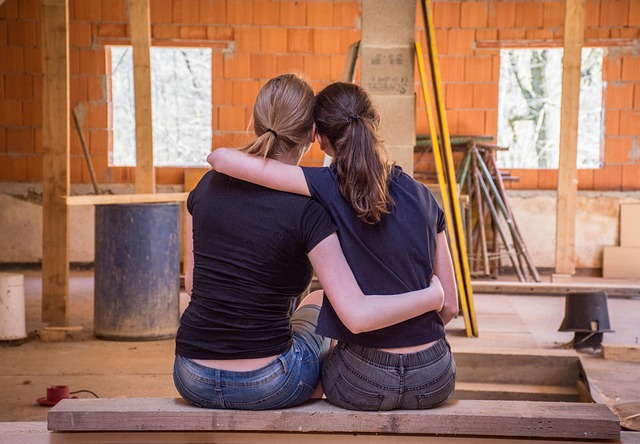
Relationship Vision Empathy Building for Stronger Connections
When two people decide to share a life together, the first instinct is often to think about romance, shared hobbies, and future plans. Yet beneath these surface layers lies a more subtle, yet profoundly powerful force: empathy. By cultivating empathy, couples can create a clear relationship vision—a shared roadmap that guides decisions, nurtures emotional safety, and ensures both partners feel understood. In this guide we explore how empathy is the engine behind a sustainable relationship vision, and we outline concrete steps to strengthen that vision in everyday life.
What Is a Relationship Vision?
A relationship vision is a deliberately articulated set of values, goals, and expectations that both partners agree upon. It is not a static contract but a dynamic conversation that evolves as individuals grow. Think of it as a shared compass: while it may not dictate every choice, it provides a sense of direction and purpose. The core of a relationship vision is built on mutual understanding, and empathy is the bridge that turns abstract ideals into lived experience.
Why Empathy Is Essential for a Strong Relationship Vision
Empathy—the ability to step into another’s emotional space—plays a pivotal role in shaping a meaningful relationship vision. When partners listen with genuine curiosity and validate each other’s feelings, they create a foundation of trust that allows honest dialogue about future aspirations. This trust encourages vulnerability, which in turn fuels deeper connection. Below are key reasons why empathy underpins a robust relationship vision:
- Facilitates open communication about desires and boundaries.
- Reduces defensive reactions during conflict.
- Encourages joint problem‑solving rather than competition.
- Promotes alignment of long‑term goals and values.
Building Empathy: The First Step Toward a Shared Vision
Developing empathy is an active practice that involves more than just listening. It requires intentional effort to understand your partner’s perspective, anticipate their needs, and respond with compassion. The following techniques help couples cultivate this skill:
- Active Listening: Give full attention, avoid interrupting, and paraphrase what your partner says to confirm understanding.
- Emotion Reflection: Acknowledge feelings (“I hear that you’re feeling frustrated about the budget”).
- Perspective Taking: Ask “What would you do if you were in my position?” to explore alternative viewpoints.
- Curiosity Over Judgment: Replace critical questions with “What did that experience mean to you?”
“Empathy isn’t just a feeling; it’s an action that rewires the way we relate to one another.” — Anonymous
Creating Your Relationship Vision Together
Once a baseline of empathy is established, couples can begin constructing a relationship vision that resonates with both. This process is collaborative, iterative, and anchored in shared values. Use the following framework to guide the conversation:
1. Clarify Core Values
Ask each other what matters most—be it honesty, adventure, family, or career growth. Write down the top three values and look for common ground.
2. Set Shared Goals
Translate values into concrete, measurable goals. For instance, if mutual respect is a value, a goal might be to have a weekly check‑in to discuss feelings.
3. Define Boundaries
Identify areas that require clear limits—time management, financial decisions, or external commitments. Boundaries protect the vision from being eroded by conflicting priorities.
4. Draft a Living Document
Create a simple statement that captures your vision: “We commit to growing together, honoring each other’s ambitions, and celebrating everyday victories.” Review it quarterly and adjust as life changes.
Practical Steps to Keep the Vision Alive
Having a relationship vision is only the first milestone. Sustaining it demands ongoing effort. Here are actionable habits that embed empathy into daily life:
- Daily Gratitude Ritual: Share one thing you appreciated about each other every evening.
- Monthly Reflection Sessions: Review progress on goals, discuss obstacles, and celebrate successes.
- Scheduled “No‑Tech” Time: Designate a period each week to focus solely on each other, free from digital distractions.
- Emotion Journaling: Keep a shared journal where each partner writes thoughts or concerns, fostering transparency.
- Conflict Rehearsal: Practice expressing disagreement with “I feel …” statements before it escalates.
Common Challenges and How to Overcome Them
Even the most empathetic couples encounter friction. Recognizing and addressing these hurdles promptly preserves the integrity of the relationship vision:
- Communication Breakdowns: Revisit listening skills and set a timer for conversations to ensure balanced dialogue.
- External Stressors: Agree on how to protect the vision during demanding periods—e.g., scheduling regular check‑ins even on busy days.
- Changing Priorities: Accept that the vision is adaptable; revisit and revise goals when one partner’s interests shift.
- Unconscious Biases: Foster self‑reflection by identifying personal triggers and discussing them openly.
Conclusion: The Continuous Journey of Empathy and Vision
A strong relationship vision is never a finished product; it is a living conversation that evolves as partners learn, grow, and face new challenges. Empathy transforms that conversation into a resilient partnership, where both individuals feel seen, heard, and valued. By committing to active listening, shared goal setting, and regular reflection, couples can keep their relationship vision aligned and their connection deepened. The journey requires intentionality, but the reward—a partnership built on mutual understanding and shared purpose—is immeasurable.

